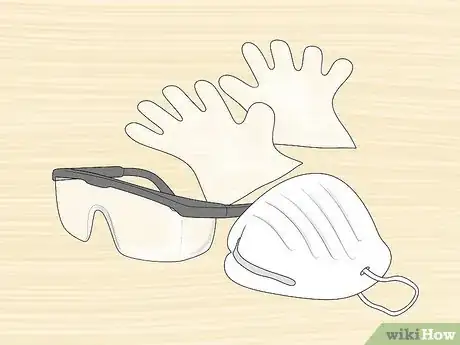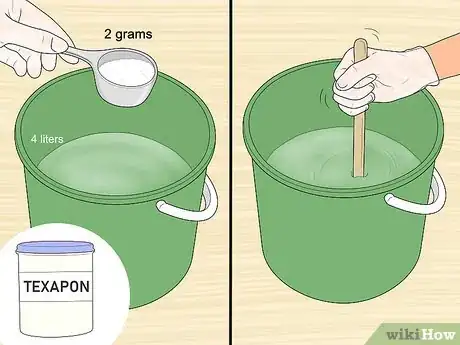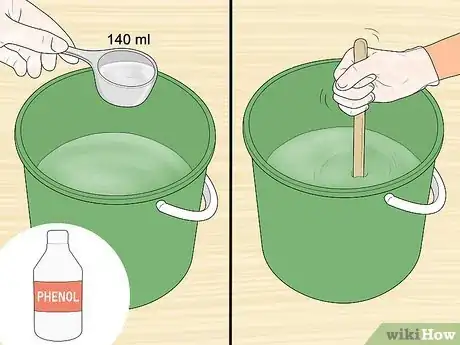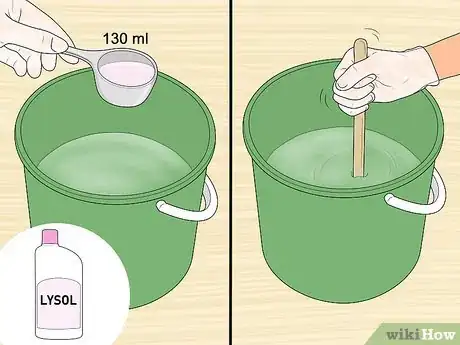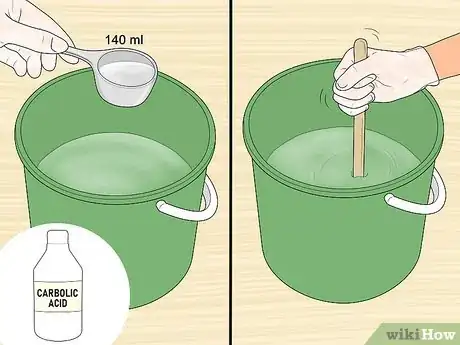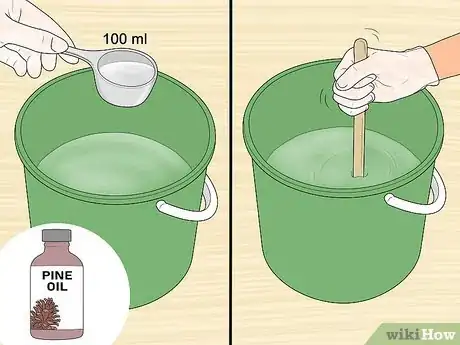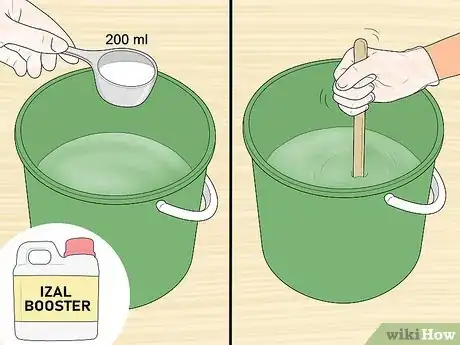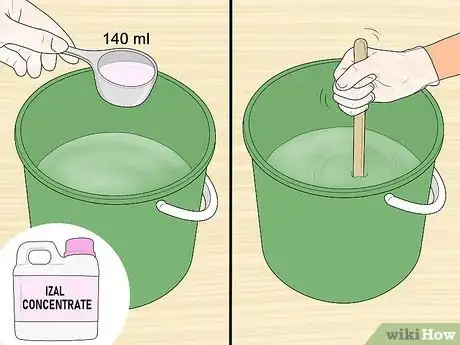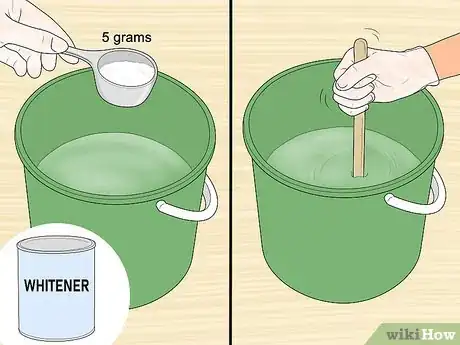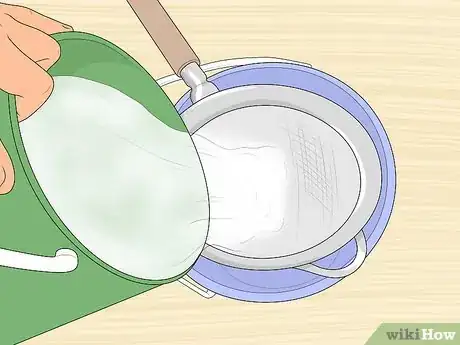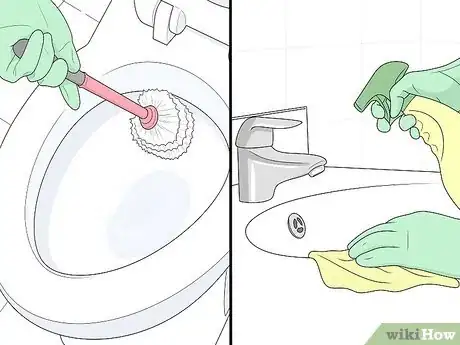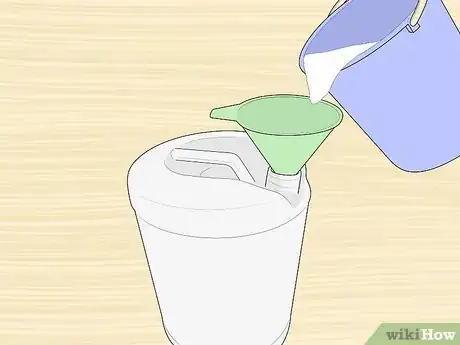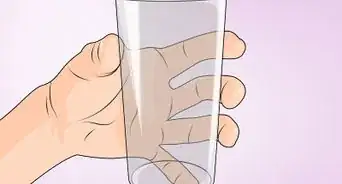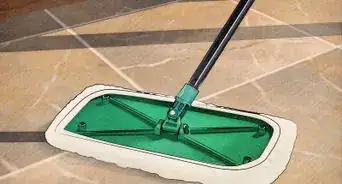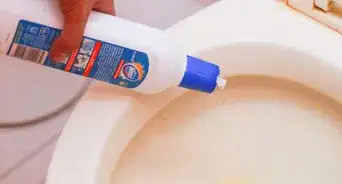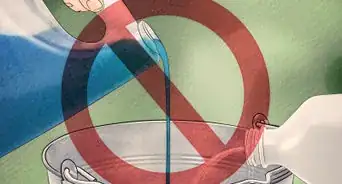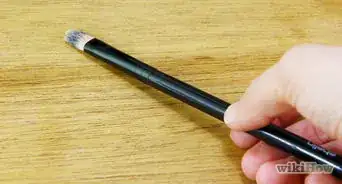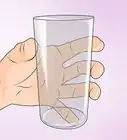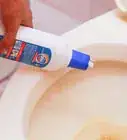This article was co-authored by wikiHow staff writer, Amber Crain. Amber Crain has been a member of wikiHow’s writing staff for the last six years. She graduated from the University of Houston where she majored in Classical Studies and minored in Painting. Before coming to wikiHow, she worked in a variety of industries including marketing, education, and music journalism. She's been a radio DJ for 10+ years and currently DJs a biweekly music program on the award-winning internet radio station DKFM. Her work at wikiHow supports her lifelong passion for learning and her belief that knowledge belongs to anyone who desires to seek it.
There are 15 references cited in this article, which can be found at the bottom of the page.
wikiHow marks an article as reader-approved once it receives enough positive feedback. In this case, 94% of readers who voted found the article helpful, earning it our reader-approved status.
This article has been viewed 48,683 times.
Learn more...
Izal is a powerful disinfectant and germicide that's commonly used in households, offices, hotels, schools, and hospitals. Many people like to make Izal at home since it's extremely effective and can be made at a low cost. When making Izal germicide at home, always wear the appropriate safety gear and work in a well-ventilated space. Izal is ready to use after you mix together the ingredients, or you can store it in heavy-duty plastic containers for future use.
Ingredients
- 140 ml of carbolic acid
- 130 ml of Lysol
- 140 ml of Phenol
- 2 grams of Texapon
- 100 ml of pine oil
- 4 liters of water
- 200 ml of Izal booster
- 140 ml of Izal concentrate
- 5 grams of whitener
Makes approximately 5 liters of disinfectant
Steps
Setting up the Workspace
-
1Put on protective googles, a dust mask, and disposable plastic gloves. The chemicals used to make Izal are strong, so it's important to take proper safety precautions. Cover your nose with a dust mask so that you don't breathe in the harmful vapors. Additionally, wear plastic eye goggles and put on disposable plastic gloves to protect your skin.[1]
- Keep a fully stocked first aid kit nearby in case you need to treat minor chemical burns. Bear in mind that serious burns should be treated by a doctor and may need to be neutralized.
- Working with these chemicals is not advised if you have asthma or other breathing problems.[2]
-
2Set up your workspace in a well-ventilated area. Mixing ingredients for Izal creates potent chemical fumes. Be sure to set up your workspace on a flat, stable surface near an open window, or in a large room with plenty of air circulation. You can turn on a ceiling fan or place a box fan in the open window to improve air circulation.
- Don't work near open flames. These chemicals are highly flammable.
- Choose a workspace that children can't access. Store unused chemicals out of reach of children.[3]
Advertisement -
3Use proper lab equipment, mixing utensils, and well-packaged chemicals. You will need a 10-15 liter plastic bucket, measuring utensils, and a variety of chemical-safe stirring utensils for this project. You can buy the required chemicals and tools from reputable suppliers or chemical wholesalers. Always buy chemicals that are quality-control tested and packaged properly.
- If you don't have a good working knowledge of a basic lab setup or previous experience mixing chemicals together, you may want to reconsider this project.
Mixing the Ingredients
-
1Combine Texapon and water in a plastic bucket. Measure out 4 liters of water and pour it into the plastic bucket. Add 2 grams of Texapon to the water and stir the mixture carefully with a chemical-safe spoon or lab stirrer. Keep stirring until the Texapon is completely dissolved.[4]
- The mixture will get slightly frothy as you stir it.
- Texapon is a sodium laureth sulfate frequently used in detergents, soaps, and shampoos. It is usually white and comes in crystal, flake, or powder form.
- Texapon can severely irritate the skin, eyes, lungs, and nasal passageways.[5]
-
2Add the Phenol to the mixture and stir thoroughly. Carefully measure out 140 ml of Phenol and pour it into the mixture in your bucket. Stir the ingredients with your chemical-safe stirrer until they're well combined. The mixture will continue to look frothy and may get frothier as you stir in the Phenol.[6]
- Phenol is commercially available in liquid form and is commonly used in disinfectants and other consumer products. It's usually clear or light yellow in color.
- Phenol can cause respiratory irritation, headaches, and eye irritation. Contact with skin can cause chemical burns.[7]
-
3Add the Lysol liquid to the mixture and stir continuously. Measure out 130 ml of Lysol and add it to the mixture in the bucket. Stir continuously as you add the chemical so that it combines completely with the other ingredients.[8]
- Lysol liquid is commonly available in grocery stores. It is a powerful germicide, and the liquid may look light pink or yellow in color.
-
4Pour the carbolic acid into the mixture and keep stirring. Measure out 140 ml of liquid carbolic acid and add it to the mixture in the bucket. Keep stirring so that the carbolic acid combines with the other ingredients. Continuous stirring is crucial, since it encourages the necessary chemical reaction to take place quickly.[9]
- Carbolic acid is highly corrosive and toxic. Breathing in the vapors can damage the upper respiratory tract and skin contact may cause chemical burns.[10]
-
5Stir in the pine oil. Measure out 100 ml of pine oil and pour it into the mixture. Stir thoroughly to combine the ingredients in the mixture. Be careful not to create any splashback as you stir.[11]
- Pine oil is a highly concentrated essential oil obtained from pine trees. It is commonly used as a germicide and disinfectant in commercial products.[12]
-
6Add the Izal booster to the mixture. Measure out 200 ml of Izal booster and carefully pour it into the bucket with the other ingredients. Stir continuously as you add the booster and continue stirring after you've poured it in. The solution should still look frothy.[13]
- Izal booster is a milky-looking chemical that boosts the properties of the other chemicals.
-
7Pour the Izal concentrate into the bucket and keep stirring. Measure out 140 ml of the Izal concentrate liquid and dump it into the bucket. Continue stirring throughout the entire process.[14]
- Izal concentrate is a light pink liquid and highly irritating to the skin and mucus membranes.
-
8Measure out the whitener and stir it into the mixture. Pour 5 grams of whitener into the bucket as you continue to stir the solution. Keep stirring until the ingredients are fully combined.[15] This substance is also known as white binder and white spirit.
- Essentially, this substance binds all of the ingredients in the mixture together and creates a whitening effect on surfaces. It's usually sold in powder or tablet form.
Straining and Storing the Mixture
-
1Pour the Izal through a fine mesh strainer to remove particles. Your finished Izal may have small particles or lumps in it. You can easily remove these solids by pouring the mixture through a fine mesh strainer or sieve into another large plastic bucket.[16]
-
2Use the Izal to clean toilets, tiles, and other hard surfaces. Izal disinfects hard surfaces and also produces a bleaching or whitening effect. It's extremely effective at removing germs from toilets, tile, hard flooring, kitchen counters, and so on. Use the cleaner to mop and wipe down surfaces.
- Izal is frequently used to disinfect commercial spaces like hospitals, hotels, restaurants, offices, and schools.
- Wear plastic gloves when cleaning with Izal to protect your skin.
-
3Store any leftover solution in heavy-duty plastic containers. Use a large funnel to transfer the leftover cleaner from the plastic bucket into heavy-duty plastic storage containers with air-tight lids. Store Izal at room temperature out of the reach of children and pets.
- Izal is commonly mixed up in large quantities and stored or sold to commercial spaces for internal use.
Warnings
- Contact your local Poison Control Center if Izal is ingested.⧼thumbs_response⧽
- Always use the appropriate safety gear when working with strong chemicals.⧼thumbs_response⧽
- Keep Izal out of the reach of children and pets.⧼thumbs_response⧽
- Keep a first aid kit nearby to treat chemical burns.⧼thumbs_response⧽
Things You'll Need
- Large plastic bucket
- Measuring utensils
- Chemical-safe spoons and stirrers
- Plastic gloves
- Eye protection
- Dust mask
- Large funnel
- Heavy-duty plastic storage containers
Resources
- ↑ https://www.youtube.com/watch?v=x8PMgYmN3qM&feature=youtu.be&t=186
- ↑ https://www.youtube.com/watch?v=x8PMgYmN3qM&feature=youtu.be&t=216
- ↑ https://www.youtube.com/watch?v=x8PMgYmN3qM&feature=youtu.be&t=186
- ↑ https://www.youtube.com/watch?v=x8PMgYmN3qM&feature=youtu.be&t=242
- ↑ https://toxnet.nlm.nih.gov/cgi-bin/sis/search/a?dbs+hsdb:@term+@DOCNO+1315
- ↑ https://www.youtube.com/watch?v=x8PMgYmN3qM&feature=youtu.be&t=259
- ↑ https://www.cdc.gov/niosh/topics/phenol/
- ↑ https://www.youtube.com/watch?v=x8PMgYmN3qM&feature=youtu.be&t=315
- ↑ https://www.youtube.com/watch?v=x8PMgYmN3qM&feature=youtu.be&t=348
- ↑ https://www.caymanchem.com/msdss/15392m.pdf
- ↑ https://www.youtube.com/watch?v=x8PMgYmN3qM&feature=youtu.be&t=381
- ↑ https://www.britannica.com/topic/pine-oil
- ↑ https://www.youtube.com/watch?v=x8PMgYmN3qM&feature=youtu.be&t=424
- ↑ https://www.youtube.com/watch?v=x8PMgYmN3qM&feature=youtu.be&t=464
- ↑ https://www.youtube.com/watch?v=x8PMgYmN3qM&feature=youtu.be&t=508
- ↑ https://www.legit.ng/1136495-how-izal-home.html
